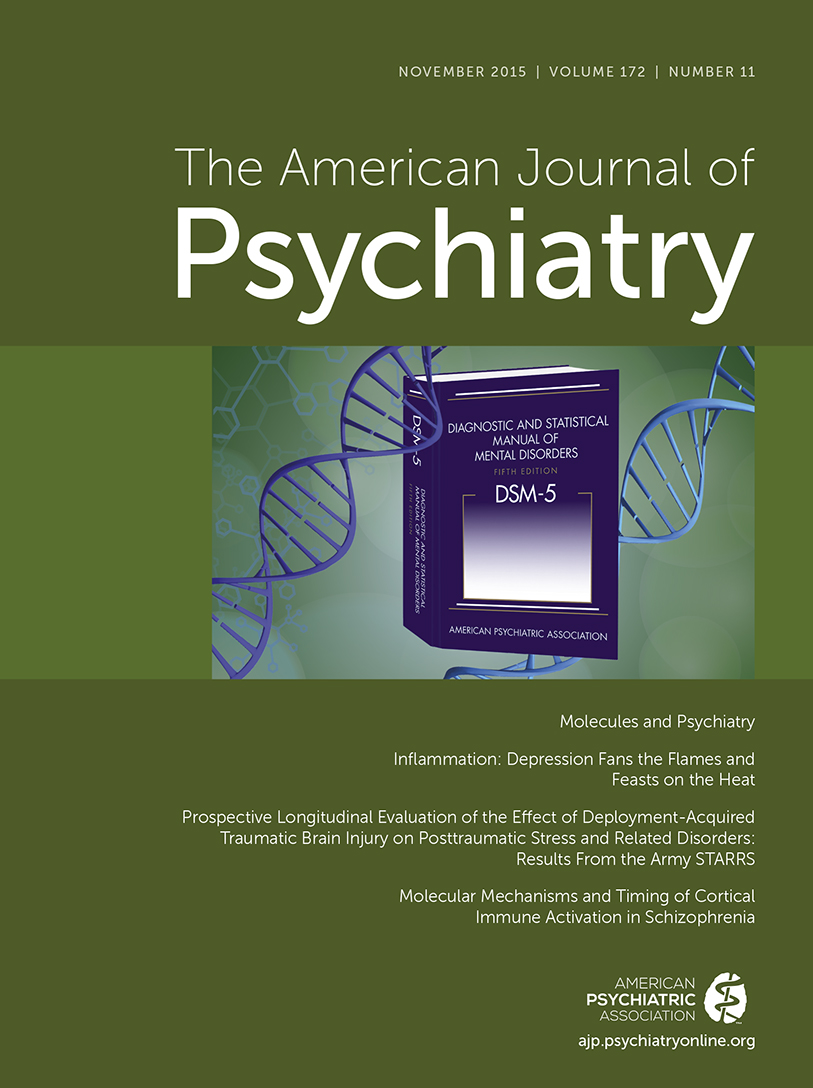Post-TBI Central Hypogonadism and PTSD
To the Editor: Traumatic brain injury (TBI) and posttraumatic stress disorder (PTSD) are frequently comorbid in veterans of the Iraq and Afghanistan wars (1). A possible explanation for the high comorbidity of these conditions is that TBI may induce behavior-affecting CNS neurochemical sequelae. This explanation is supported by data indicating that as many as 32%−42% of blast-exposed veterans display pituitary dysfunction (2, 3). Gonadotropin deficiency in particular has been reported in 5%−12% of veterans with blast-related TBI (2, 3).
Because there is significant overlap between the symptoms of male hypogonadism and PTSD, including anxiety, depression, sexual dysfunction, amotivation, poor stress tolerance, and irritability (4), central hypogonadism may contribute to PTSD symptomology in patients with a history of TBI, as illustrated by the following case:
A 29-year-old male Marine veteran with PTSD and a history of two blast concussions, with brief loss of consciousness, presented with insomnia, emotional detachment, intolerance of crowds, hypervigilance, self-isolation, traumatic memories, hyperacusis, irritability, and explosiveness. These symptoms had persisted despite years of cognitive therapy and psychopharmacologic trials, including an ongoing sertraline and prazosin combination.
We tested thyroid, adrenal, and gonadal hormones; IGF-1; and prolactin and found hypotestosteronemia, with an early-morning total testosterone concentration of 240 ng/dL, followed 1 month later by a level of 210 ng/dL (250–800 ng/dL reference range at the Cincinnati Veterans Affairs Medical Center). The circulating luteinizing hormone measure was 0.8 mIU/mL (reference range 1.3–8.6 mIU/mL), consistent with central hypogonadism. This patient also had erectile dysfunction.
The patient, who weighed more than 200 lb, was started on testosterone gel, 1.62%, at a dosage of 60.75 mg/day. Within weeks of treatment initiation, he reported improved sleep, energy levels, sexual function, concentration, strength, and endurance. Importantly, his irritability and explosiveness were ameliorated and replaced with a sense of increased “calm” and tolerance for others. He even began going to the grocery store during peak hours, which he had previously avoided doing until after 1:00 a.m. These improvements have persisted for more than 1 year with continued testosterone supplementation, which maintains his circulating total testosterone concentrations near the middle of the reference range.
This case suggests that optimal treatment of PTSD may require the correction of accompanying hypogonadism. While a placebo effect cannot be ruled out, it is notable that the patient had failed years of other interventions. Correction of testosterone deficiency has been shown to improve response to antidepressant psychopharmacology (5), and it is possible the improvement in our patient’s PTSD symptoms was a direct consequence of an improved sensitivity to antidepressant treatment. Regardless, this case demonstrates the importance of screening for endocrine abnormalities, particularly hypotestosteronemia, in individuals with both PTSD and a history of TBI.
1 : Mild traumatic brain injury in U.S. Soldiers returning from Iraq. N Engl J Med 2008; 358:453–463Crossref, Medline, Google Scholar
2 : High prevalence of chronic pituitary and target-organ hormone abnormalities after blast-related mild traumatic brain injury. Front Neurol 2012; 3:11Crossref, Medline, Google Scholar
3 : Pituitary dysfunction after blast traumatic brain injury: The UK BIOSAP study. Ann Neurol 2013; 74:527–536Crossref, Medline, Google Scholar
4 : Testosterone deficiency. Curr Psychiatr 2004; 3:24–42Google Scholar
5 : Effects of supraphysiologic doses of testosterone on mood and aggression in normal men: a randomized controlled trial. Arch Gen Psychiatry 2000; 57:133–140Crossref, Medline, Google Scholar



